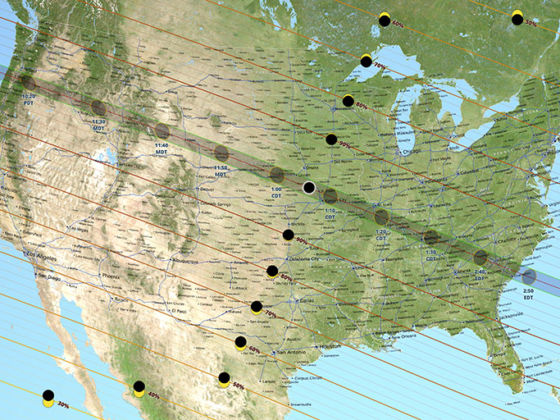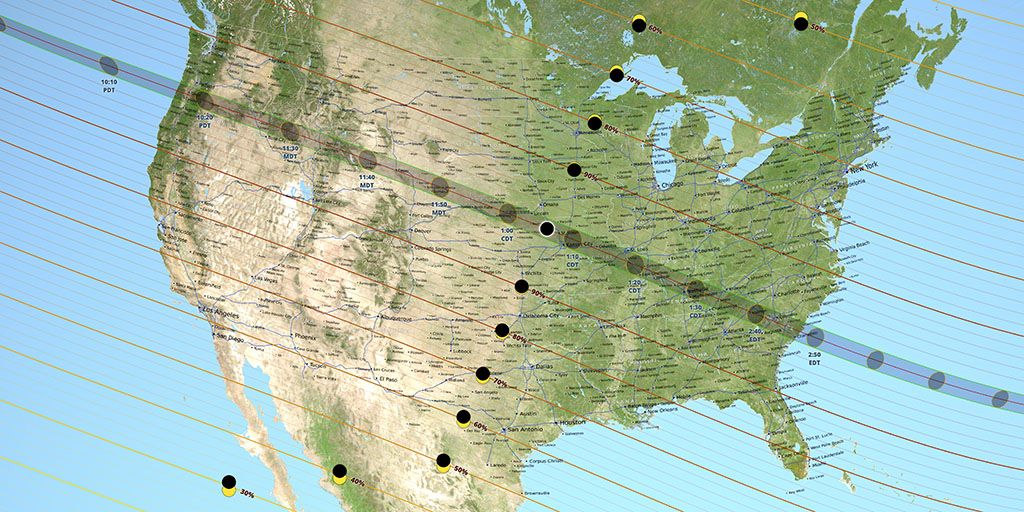ON MONDAY, August 21, THE MOON is going to pass in front of the sun, and all of North America is going to be treated to an eclipse. Eclipses themselves are not too rare, but this one is special: anyone in the long stretch of land between Lincoln Beach, Oregon, and Charleston, South Carolina will get to see a total eclipse. And this does not happen frequently. The last total eclipse in the US was in 1979, and the last one to go coast to coast was in 1918.
Here’s what you need to know for viewing.

